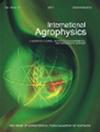建立野生芦笋粮食/能源作物驯化体系
IF 1.7
4区 农林科学
Q2 AGRONOMY
引用次数: 0
摘要
本文章由计算机程序翻译,如有差异,请以英文原文为准。
Wild asparagus domestication for food/energy cropping system set up
. The solar greenhouse sector is currently unbalanced towards energy production. Thus, the introduction of new crop options, such as wild asparagus, could contribute to the promotion of economic and environmental sustainability in these food/energy systems (mixed-systems). We hypothesized that wild asparagus is able to adapt both to sunny and partially shaded environments provided that both nutrient and water supply are guaranteed. Over a three-year experiment, we carried out an intensive examination of within-season phenological, physiological and productive dynamics under a greenhouse with 50% of the roof area covered with photovoltaic panels. Under the photovoltaic roof the net assimilation rate was on average 5 time lower, averaged over the growing seasons (0.6 μmol CO 2 m -2 s -1 ), resulting in negative results for some monitoring dates. However, lower net assimilation rate did not negatively impact spears production in terms of number, length and diameter. The year of establishment affected the length of the spear, which was 4 cm shorter in 2013 than in 2014 and 2015, when no significant difference was observed. The novelty proposed in this study could be a successful option for farmers to promote production diversification and a promising strategy to guarantee the environmental and economic sustainability of the whole mixed system.
求助全文
通过发布文献求助,成功后即可免费获取论文全文。
去求助
来源期刊

International Agrophysics
农林科学-农艺学
CiteScore
3.60
自引率
9.10%
发文量
27
审稿时长
3 months
期刊介绍:
The journal is focused on the soil-plant-atmosphere system. The journal publishes original research and review papers on any subject regarding soil, plant and atmosphere and the interface in between. Manuscripts on postharvest processing and quality of crops are also welcomed.
Particularly the journal is focused on the following areas:
implications of agricultural land use, soil management and climate change on production of biomass and renewable energy, soil structure, cycling of carbon, water, heat and nutrients, biota, greenhouse gases and environment,
soil-plant-atmosphere continuum and ways of its regulation to increase efficiency of water, energy and chemicals in agriculture,
postharvest management and processing of agricultural and horticultural products in relation to food quality and safety,
mathematical modeling of physical processes affecting environment quality, plant production and postharvest processing,
advances in sensors and communication devices to measure and collect information about physical conditions in agricultural and natural environments.
Papers accepted in the International Agrophysics should reveal substantial novelty and include thoughtful physical, biological and chemical interpretation and accurate description of the methods used.
All manuscripts are initially checked on topic suitability and linguistic quality.
 求助内容:
求助内容: 应助结果提醒方式:
应助结果提醒方式:


